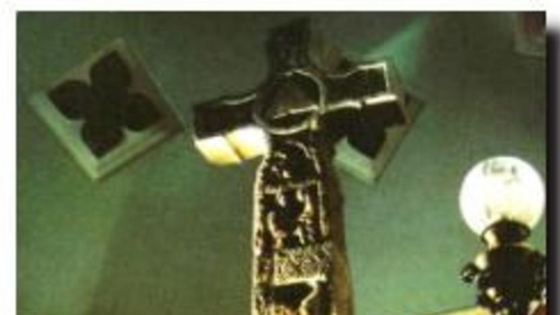The Dream of the Rood is one of the famous Anglo-Saxon Christian poems. This poem is short and contains 146 lines only. It is generally attributed to the greatest Anglo-Saxon Christian poet, Cynewulf, although there are other conjectures, too. Probably Cynewulf wrote the poem, but not the whole one. As there is variety in the style of the poem, varied authorship for it may well be entertained. Cynewulf had a dream of the cross in his early life, which converted him and to which he refers in his work Elene. He wished to record his dream fully before his death. There was a poem, already in existence and well-known in Cynewulf’s time. The poem that describes the ascent of Christ upon the cross, His death, and his burial was attributed by some to Caedmon. It is supposed that Cynewulf took this poem as his basic material and worked it up into a description in which the cross appears to him. Then he wrote to that very poem a beginning and an end of his own and in that short meter, he used in his work.
The introduction is quite consistent with Cynewulf’s characteristic technique, with the exception of long lines. The personal cry, “I stained with sins, wounded with my guilt”-is almost a quotation from his earlier works, Juliana and Elene. The impersonation of the tree and the account of its life in the wood is like the beginning and the meaning of some of the Anglo-Saxon Riddles. The subjective personal element, so strong in his signed poems, is stronger in this poem. It would naturally be so if the poem were written when he was very near to death, as his retrospect and his farewell. It is equally natural, if this view of the date of the poem be true, that he would assign at last, by means of his art, the story of the most important hour of his life, and leave it as a legacy to his friends of whom he is found to speak so tenderly.
The Dream of the Rood is the single dream poem in preconquest England. It relates to how the poet has a dream of the holy rood, decked with bright and sparkling gems. This rood (Christ’s cross) is well guarded by several angels, and the dreamer feels nervous at first, of his consciousness of his sin. But the color of the tree changes and, to his utter surprise and shock, the rood becomes stained with blood. The rood then begins to narrate the story of the Crucifixion, the descent from the Cross, and the Resurrection.
As the rood ceases to speak, Cynewulf’s conclusion follows. His first lines are retrospective, recounting his feelings in early manhood, immediately after his dream, which was the cause of his conversion. He felt blithe in mood because he was forgiven, became passionate in prayer, and eager for death. There is a perceived mixture of inexplicable feelings, common to a life after some spiritual revelation. Cynewulf narrates how he trod to the tree with great conviction and expressed his eagerness for departure from earth. But he does not ultimately give way to death, although he endured too much in long, weary days. He turns from the past to the present and seeks his refuge- his hope of life in the tree of victory. At last, with a happy reversion to his original theme, he turns from himself to the triumphant return of Jesus.
The Dream of the Rood is one of the finest specimens of the English symbolic poetry of the earliest stage. The rood stands as the symbol of man’s sin and salvation. The Cross symbolizes cosmic suffering and personal redemption. This has become one of the most compelling Christian symbols. The poem is likely to invite comparison with a modern symbolic poem, ‘Stil falls the Rain” by Edith Sitwell.
Also read: The Complaint of Deor (or Deor’s Lament) Summary and Analysis

Leave a Reply